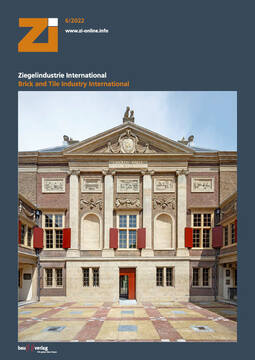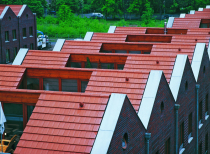Gas failure-induced production stop in brick industry with potentially massive impact on construction sector
A loss of Russian gas supplies would have massive production losses in the German brick and tile industry and considerable effects on upstream and downstream sectors.
This is the result of a specification study carried out by Prognos on behalf of the Federal Association of the German Brick and Tile Industry (BVZi). The aim of the study is to transfer the consequences of a gas supply stop to the specific conditions of the industry. The precursor study “Consequences of a supply disruption of Russian gas for German industry” published in the summer was used as a basis. The scenario and the time period, second half of 2022, were adopted. Industry-specific features were taken into account to specify the impact assessment.
Production down by 52 percent
The study forecasts a potential drop in production of around 52 percent for the brick and tile industry as a result of the assumed gas supply shortfalls. This particularly high impact results from the specific production conditions of the brick industry. Production of bricks and consumption of natural gas cannot be proportional in a single plant due to the large-size kilns. A production merger does allow kilns that become free to be shut down. However, they require ten days to shut down. Finally, the industry has only a small number of bivalent plants that allow switching to other energy sources such as fuel oil. In the short term and economically, such plants cannot be procured in sufficient numbers. Green alternatives are not yet ready for mass production.
Direct and upstream consequences of a drop in production due to a gas shortage
The study puts the direct consequences of a 52 percent drop in production on the gross value added of the brick industry at a loss of 193 million euros.
The indirect consequences relate on the one hand to value-added losses for suppliers to the brick industry amounting to 223 million euros. These result from the decline in demand for intermediate goods in 22 sectors. According to the study, four sectors, which together produce around half of all intermediate goods in the brick industry, are particularly affected: (1) ceramics, processed stone and earth, ores, (2) stone and earth, other mining products and services, (3) wholesale services excluding motor vehicles, (4), land transport and transport services in pipelines.
Dependence of the construction industry on bricks
On the other, downstream side are the buyers of intermediate goods in the ceramics, processed materials and earths group of goods. Seventy-three percent of these goods went to industries in the construction sector: 31 percent to building construction, 24 percent to site and building installation work, and 18 percent to civil engineering.
The study does not quantify this downstream loss of value added, but it does offer arguments for a qualitative assessment. If a production loss of the magnitude mentioned were to occur, the federal housing construction targets could not be met for availability and cost reasons. This is because bricks, with a share of 30 percent, represent the most widely used residential building material in Germany. Substitution in the form of imports or other building materials such as sand-lime bricks, wood or concrete largely fails, the study argues, because of short-term availability and higher costs due to transport and market prices. From a construction industry perspective, a corresponding reduction in value added in the construction sector and negative employment effects would have to be expected.
Attila Gerhäuser, General Manager of the Federal Association of the German Brick and Tile Industry, comments on the results as follows: ”The Prognos study makes it clear what an immense contribution our industry makes to the housing policy goals of the federal and state governments. Affordable housing will not be possible in the future without the building material brick. At the same time, however, it also shows the urgent need for alternative energy sources.”
The study “Supply disruption of gas - focus on the brick industry. Production, value added and price effects on and by the brick industry in Germany” was published in October 2022. It is available on the BVZi website



